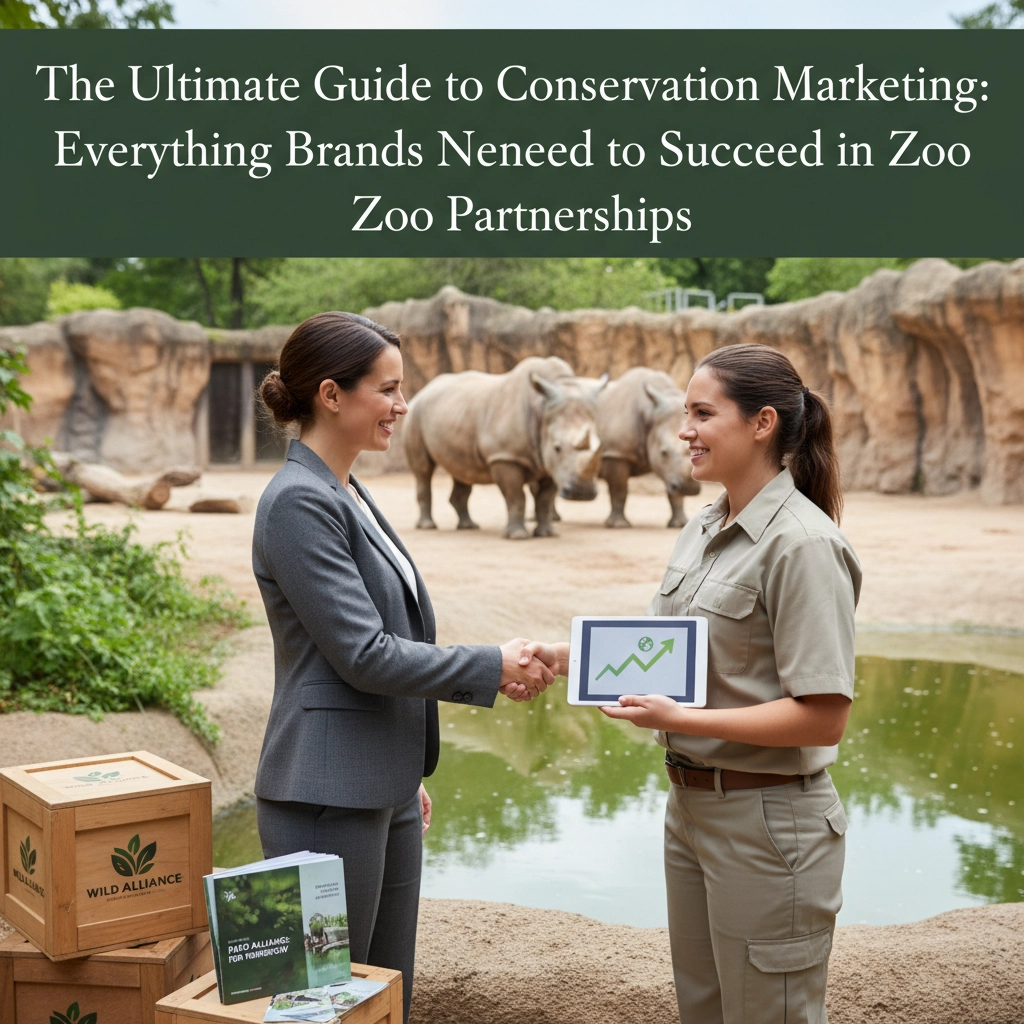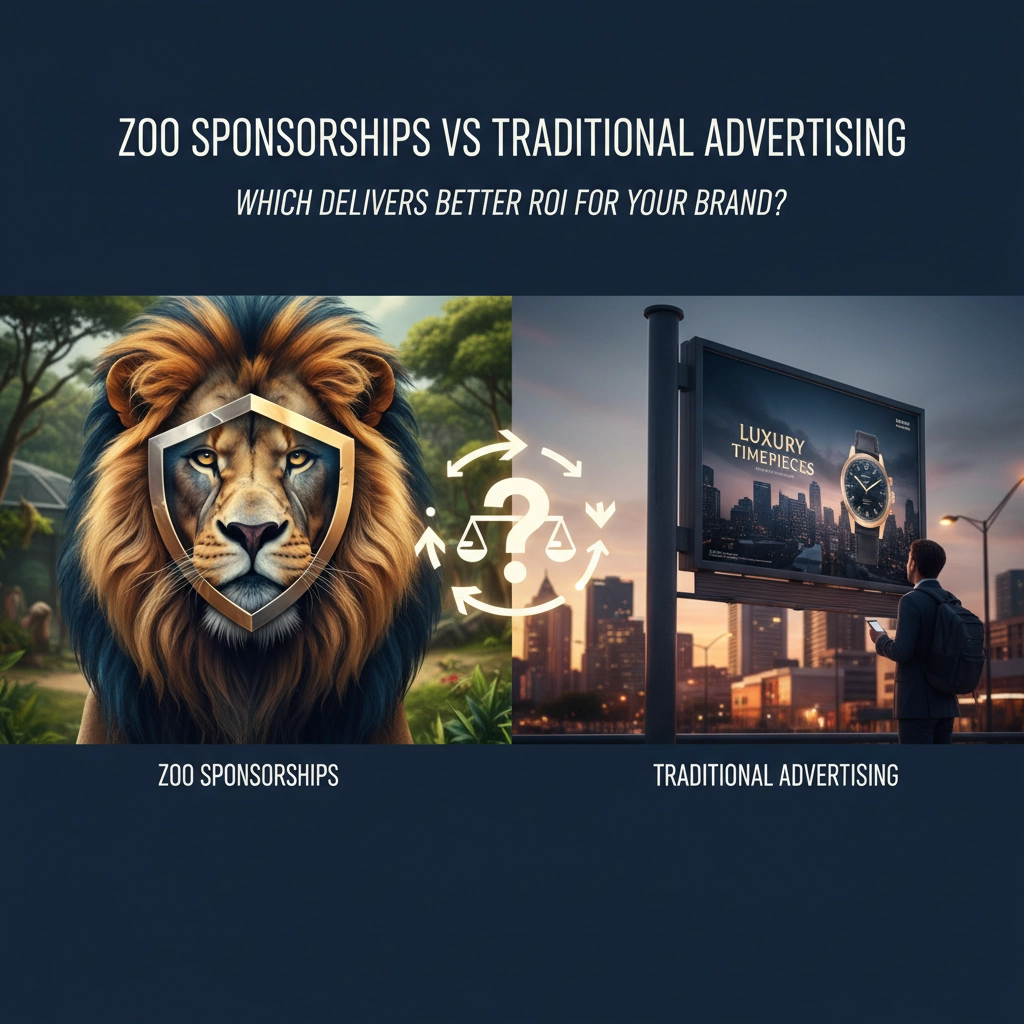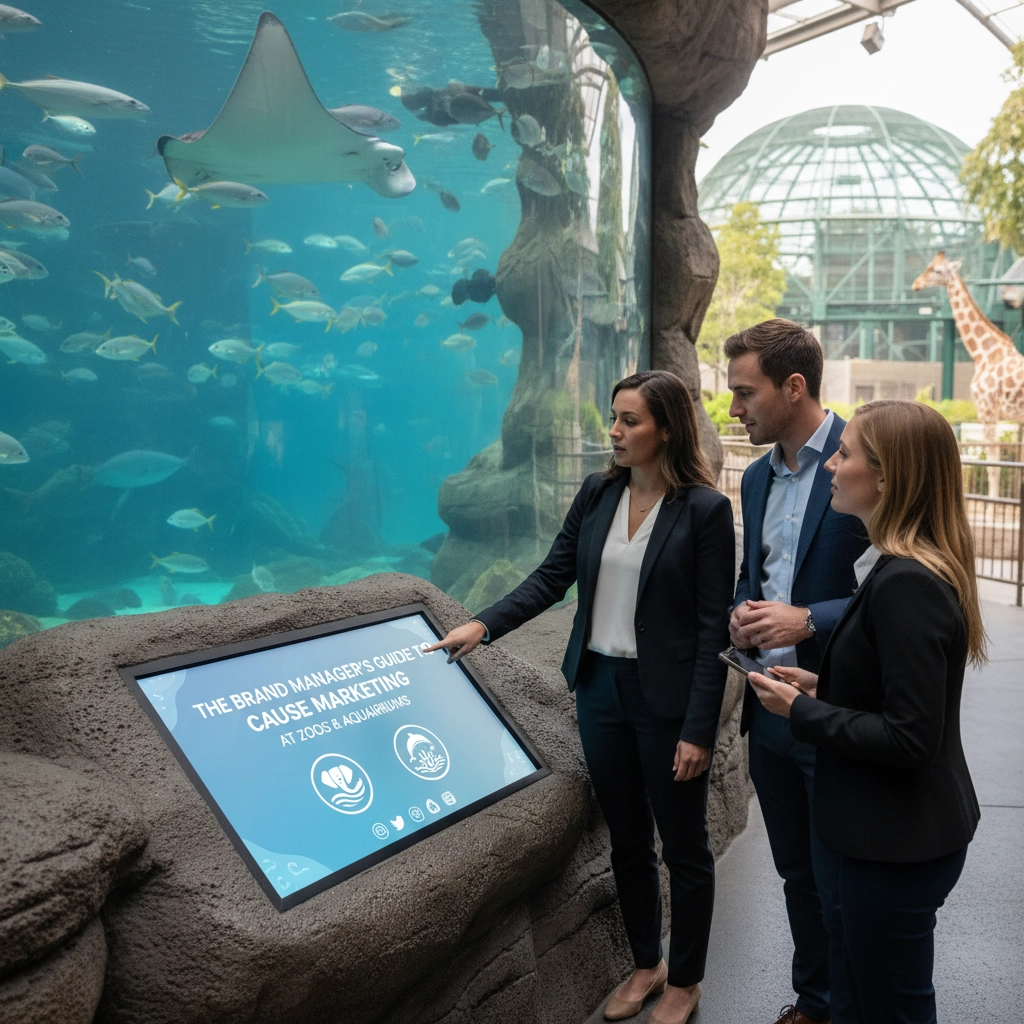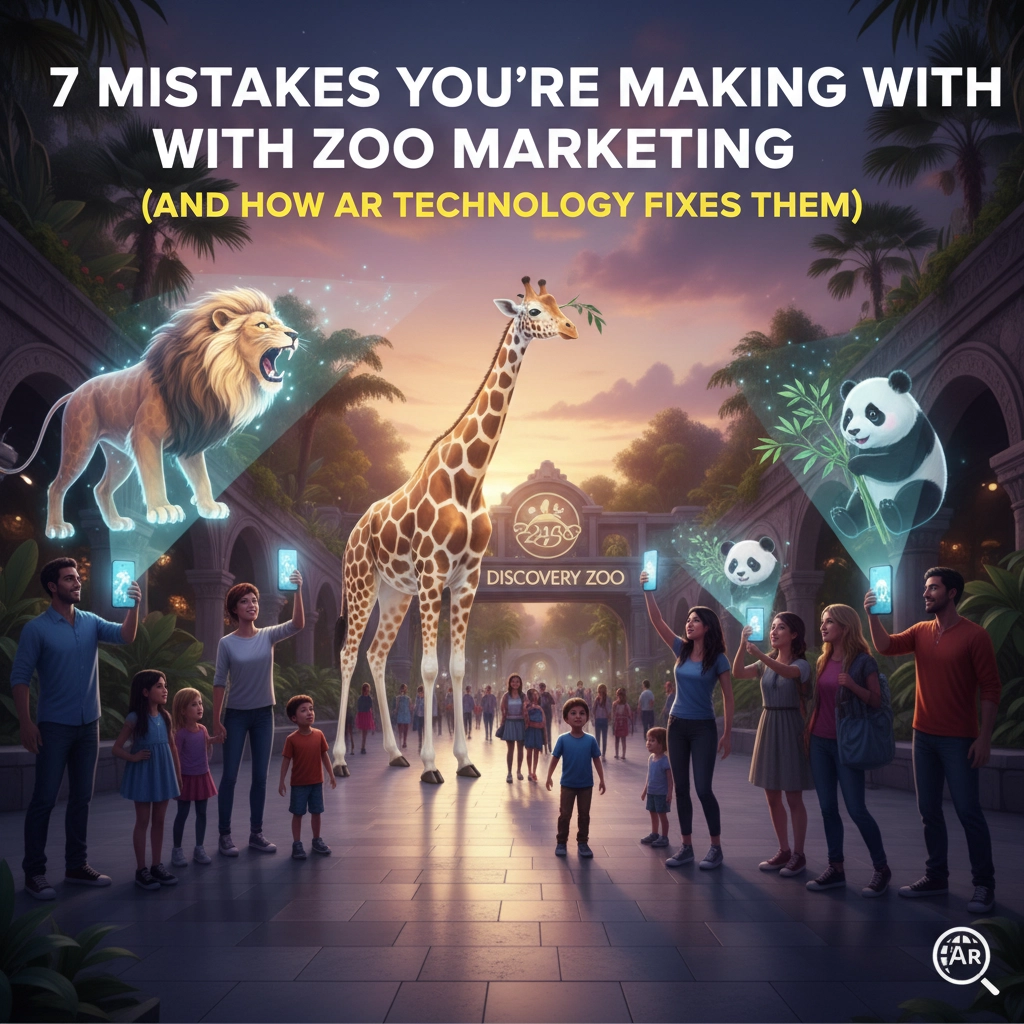Zoo sponsorships represent a goldmine of untapped revenue potential for wildlife facilities across the country. Yet despite the growing interest from brands looking to align with conservation efforts and family-friendly experiences, many zoos are leaving money on the table due to easily avoidable mistakes.
Whether you're a marketing director at a major metropolitan zoo or managing partnerships at a smaller regional facility, these sponsorship missteps could be costing you hundreds of thousands in annual revenue. More importantly, they're preventing meaningful partnerships that could enhance both your conservation mission and visitor experience.
Let's dive into the seven most common zoo sponsorship mistakes and the straightforward solutions that can transform your partnership program.
Mistake #1: Approaching Sponsors at the Wrong Time
The Problem: Most zoos make sponsorship pitches when they need the money, not when sponsors are actually making budget decisions. You're calling in March asking for summer event support, or reaching out in November hoping to secure funding for next year's programs.
Why It Hurts: Corporate sponsors typically finalize their budgets 6-12 months in advance. By the time you're pitching, their community investment dollars are already allocated. Even if they love your proposal, they simply don't have the budget available.

The Fix: Map out sponsor budget cycles and approach them during their planning periods. Most corporations plan annual budgets in Q4 for calendar year spending, while others use fiscal years ending in different months. Research your target sponsors' financial calendars and mark these dates in your partnership calendar.
Start building relationships 12-18 months before you need funding. This gives sponsors time to include your proposal in their next budget cycle and allows you to develop the relationship properly.
Mistake #2: Sending Generic Email Blasts Instead of Building Relationships
The Problem: Too many zoos treat sponsorship like a numbers game, sending identical proposals to hundreds of companies via email, hoping someone will bite. This spray-and-pray approach rarely works and can actually damage your reputation with potential partners.
Why It Hurts: Email proposals feel impersonal and transactional. Decision-makers receive dozens of similar requests weekly, and yours gets lost in the noise. Worse, it signals that you haven't taken time to understand their specific business needs or marketing objectives.
The Fix: Prioritize relationship building over mass outreach. Research potential sponsors thoroughly: understand their target demographics, marketing challenges, and community involvement priorities. Make personal phone calls to introduce yourself and your zoo's mission before sending any formal proposals.
Consider hosting sponsor appreciation events or private behind-the-scenes tours for prospects. These face-to-face interactions build the trust necessary for long-term partnerships.
Mistake #3: Focusing on Your Needs Instead of Theirs
The Problem: Most zoo sponsorship proposals read like fundraising appeals, emphasizing what the zoo needs rather than what sponsors will gain. You're highlighting your attendance numbers and conservation programs without connecting them to the sponsor's business objectives.
Why It Hurts: Sponsors aren't making charitable donations: they're making marketing investments. They need clear ROI and measurable benefits that align with their business goals. When proposals focus solely on the zoo's needs, sponsors can't visualize the value they'll receive.

The Fix: Reframe every sponsorship proposal around sponsor benefits. Instead of "We need $25,000 for our penguin habitat renovation," try "Reach 300,000 annual visitors and position your brand as a conservation leader through exclusive naming rights to our new Antarctic Experience."
Research each prospect's target audience and marketing challenges. If they're trying to reach families with young children, emphasize your educational programs and school group visits. If they're focused on corporate responsibility, highlight your conservation impact and research initiatives.
Mistake #4: Underpricing Your Sponsorship Packages
The Problem: Many zoos undervalue their sponsorship opportunities, offering packages at prices that barely cover costs or setting rates based on what they think sponsors can afford rather than the actual value provided.
Why It Hurts: Underpricing creates several problems: it signals low value to potential sponsors, makes it difficult to improve offerings over time, and leaves revenue on the table. It also sets precedents that make future price increases challenging.
The Fix: Calculate the true value of your sponsorship benefits using industry-standard metrics. For example, if your zoo attracts 500,000 annual visitors, a year-long exhibit sponsorship provides massive brand exposure that would cost significantly more through traditional advertising channels.
Research comparable sponsorship rates at similar attractions, sporting venues, and entertainment facilities in your market. Don't be afraid to price your packages at fair market value: quality sponsors understand that meaningful partnerships require appropriate investment.
Mistake #5: Offering One-Size-Fits-All Packages
The Problem: Many zoos create standardized sponsorship tiers (Bronze, Silver, Gold) without considering the diverse needs and objectives of different types of sponsors. A local restaurant has completely different goals than a national corporation or healthcare system.
Why It Hurts: Generic packages fail to maximize value for either party. Small businesses might need hyperlocal exposure, while large corporations want brand positioning and employee engagement opportunities. Cookie-cutter approaches miss these nuanced requirements.

The Fix: Develop flexible, customizable sponsorship options that can be tailored to different sponsor types and objectives. Create modular benefits that can be mixed and matched based on sponsor needs and budgets.
For local businesses, focus on community visibility and customer acquisition. For larger corporations, emphasize employee engagement opportunities, client entertainment options, and brand positioning benefits. Healthcare organizations might value educational partnership opportunities, while financial services companies could prioritize family-focused messaging.
Mistake #6: Neglecting Exclusive and Multi-Year Opportunities
The Problem: Most zoos focus on annual sponsorships without exploring exclusive partnerships or multi-year agreements. This approach limits revenue potential and misses opportunities to build deeper, more valuable relationships.
Why It Hurts: You're leaving significant money on the table. Many sponsors will pay premium prices for category exclusivity or guaranteed multi-year partnerships. These arrangements also provide revenue stability and reduce annual sales efforts.
The Fix: Develop exclusive sponsorship categories that prevent competitors from partnering with your zoo. For example, offer exclusive automotive, financial services, or healthcare partnerships at premium rates.
Create multi-year agreement incentives such as price locks, exclusive naming rights after specific terms, or enhanced benefits in subsequent years. Many sponsors prefer the predictability and relationship depth that multi-year partnerships provide.
Mistake #7: Failing to Innovate and Refresh Your Program
The Problem: Many zoos get comfortable with successful sponsorship formats and stop innovating. Year after year, they offer the same basic packages without evolving to meet changing sponsor needs or market trends.
Why It Hurts: Stagnant programs lose their appeal over time. Sponsors want fresh opportunities to engage their audiences and differentiate from competitors. Without innovation, your zoo becomes just another line item in their marketing budget rather than a strategic partnership.
The Fix: Continuously evolve your sponsorship offerings based on industry trends, technology advances, and changing visitor expectations. Consider digital integration opportunities, social media partnerships, virtual engagement options, and experiential marketing possibilities.

Survey your current sponsors annually to understand their evolving needs and gather feedback on program effectiveness. Stay informed about marketing trends in your region and adapt your offerings accordingly.
Building a Sponsorship Program That Works
Successful zoo sponsorships require strategic thinking, relationship focus, and professional execution. By avoiding these seven common mistakes, you'll position your facility for sustainable partnership growth that benefits both your conservation mission and your sponsors' business objectives.
Remember, the best sponsorships are genuine partnerships where both parties win. When you focus on creating real value for sponsors while advancing your zoo's mission, you build relationships that last for years and grow in value over time.
The key is treating sponsorship as a professional marketing service rather than a fundraising activity. With proper preparation, relationship building, and value-focused proposals, your zoo can unlock the full potential of partnership revenue while creating meaningful connections with your community's business leaders.
Ready to transform your zoo's sponsorship program? At Zoo Media, we specialize in helping wildlife facilities and attractions maximize their partnership potential through strategic marketing and relationship building. Visit zoomedia.us to learn how we can help you avoid these costly mistakes and build a thriving sponsorship program.
For immediate consultation, contact our AI Receptionist at +1 (323) 676-0621 or reach out to Dan Kost, CEO, to discuss your facility's unique partnership opportunities.
Learn more about our comprehensive approach at www.dakdan.com
Tags: #ZooMarketing #Partnerships #Sponsorship #Marketing #AdvertisingAndMarketing #Strategy #Innovation #Branding














